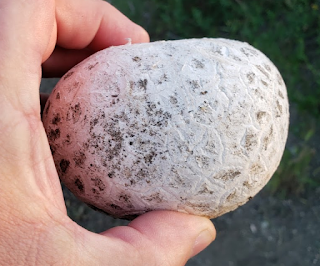While suffering a bit from an earlier attack by inchworms, it tasted wonderful.
The pole beans are also from our garden, though they are not part of our Bruschetta....
Ingredients:
- Tomato
- 1/4 yellow Onion
- Basil
- Olive Oil
- Black Pepper
- Salt
Separately, make some toasted thin slices of Ciabatta bread... I tend to eat Bruschetta on crisp thin toasts.
Wash the tomato and remove any blemishes. Dice reasonably finely, usually about a quarter inch dice is good. Place in a glass bowl.
Dice the onion (you will want about 1/4 as much as you have tomato) into chunks half the size of the tomato chunks or smaller.
Place in glass bowl atop tomato chunks.
Wash the basil and pat dry. Mince at least as finely as the onion. Place on top of Onion and Tomato. Now drizzle some olive oil over the stack and gently mix. Add the salt and ground black pepper, stir gently to mix, cover with a towel, and allow the flavors to mingle for at least fifteen minutes.
Serve by spooning onto thin, crispy toast and eating!
For our family, this has become a ritual preparation marking the start of Summer, or at least the season of the Tomato.









